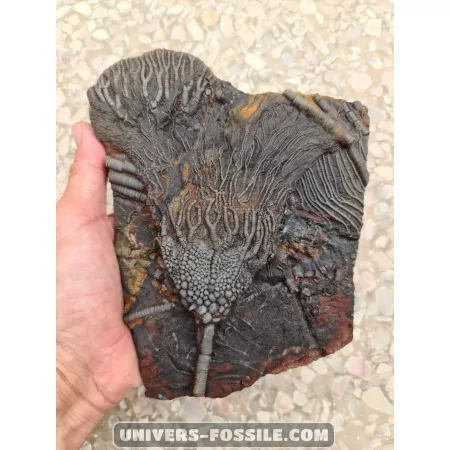Discover the Fascinating Crinoid: A Peek into Evolutionary History

Crinoid
Structure and Appearance:
Fossil crinoids come in various forms, but many have a plant-like appearance. They consist of a calcareous stem or "column" attached to the seafloor, from which radiate branched arms. These arms were used to capture food particles from the water.
Size:
Fossil crinoids could vary greatly in size, ranging from a few centimeters to several meters in length for some species.
Location:
Crinoids were abundant in ancient seas, primarily inhabiting shallow waters. Their fossilized remains are often found in sedimentary rocks formed from marine deposits.
Composition:
The most commonly fossilized parts of crinoids are their calcareous ossicles, which formed the stem and arms. These structures are often well-preserved in fossiliferous rocks.
Lifestyle:
Crinoids were typically sessile organisms, attached to the seafloor by their column. Some were mobile during their juvenile stage, but many adult crinoids remained fixed in one spot throughout their lives.
Evolution:
Crinoids have a long evolutionary history, playing a significant role in ancient marine ecosystems.
Welcome to the World of Crinoids
Unravel the mysteries of the enigmatic Crinoid, a mesmerizing creature with an evolutionary history dating back over 500 million years. These unique organisms have thrived throughout various geological ages, undergoing multiple transformative phases while retaining key anatomical features that allow paleontologists to trace their evolution.
As you delve into the world of Crinoids, you'll be captivated by their intriguing journey through time. Despite the changes they've experienced, Crinoids have managed to preserve essential characteristics that link them to their ancient ancestors.
Step into the realm of the ancient seas and explore the evolution of Crinoids – a timeless tale of adaptation and survival. Witness the fascinating adaptations that have enabled these creatures to thrive in diverse environments, leaving behind a rich legacy in the annals of natural history.
